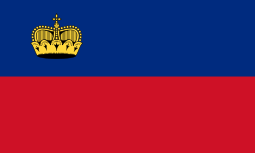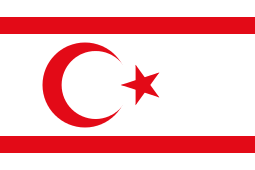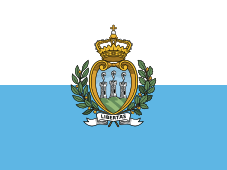Open list
| Part of the Politics series |
| Electoral systems |
|---|
|
Plurality/majoritarian |
|
|
|
Other
|
|
|
Open list describes any variant of party-list proportional representation where voters have at least some influence on the order in which a party's candidates are elected. This as opposed to closed list, which allows only active members, party officials, or consultants to determine the order of its candidates and gives the general voter no influence at all on the position of the candidates placed on the party list. Additionally, an open list system allows voters to select individuals rather than parties. Different systems give voter different amounts of influence. Voter's choice is usually called preference vote.
Systems
Relatively closed
A "relatively closed" open list system is one where a candidate must get a full quota of votes on his or her own to be assured of winning a seat. (This quota, broadly speaking, is the total number of votes cast divided by the number of places to be filled. Usually the precise number required is the Hare quota, but the Droop quota can also be used.) The total number of seats won by the party minus the number of its candidates that achieved this quota gives the number of unfilled seats. These are then successively allocated to the party's not-yet-elected candidates who were ranked highest on the original list.
More open
In a 'more open' list system, the quota for election could be lowered from the above amount. It is then (theoretically) possible that more of a party's candidates achieve this quota than the total seats won by the party. It should therefore be made clear in advance whether list ranking or absolute votes take precedence in that case.
In Dutch elections (for example to the House of the Representatives) the voter can give his vote to any candidate in a list; the vote for this candidate is called a "preference vote" (voorkeurstem in Dutch). If a candidate has at least 25% of the quota then he/she takes priority over the party's other candidates who stand higher on the party list but received fewer preference votes.
An example: A party list got 5000 votes. If the quota is 1000 votes, then the party wins five seats.
| Candidate position on the list |
Preference votes | 25% of the quota | Elected |
|---|---|---|---|
| #1 | 3500 | x (first) | x |
| #2 | 50 | x | |
| #3 | 150 | x | |
| #4 | 250 | x (third) | x |
| #5 | 100 | ||
| #6 | 100 | ||
| #7 | 450 | x (second) | x |
| #8 | 50 | ||
| ... | ... | ||
Candidates #1, #7 and #4 have each achieved 25% of the quota (250 preference votes or more). They get the first three of the five seats the party has won. The other two seats will be taken by #2 and #3, the two highest remaining positions on the party list. This means that #5 is not elected even though being the fifth on the list and having more preference votes than #2. In practice, at the national level only one or two candidates can precede on their lists. This happens more often at the local level where the quota (in absolute numbers of votes) is lower. Parties usually allow candidates to ask for preference votes, but without campaigning negatively against other candidates on the list.
In elections in Sweden, the 'most open' list is used, but a person needs to receive 5% of the party's votes for the personal vote to overrule the ordering on the party list.[1] Voting without expressing a preference between individuals is possible, although the parties urge their voters to support the party's prime candidate, to protect them from being beaten by someone ranked lower by the party.
In Slovakia each voter may, in addition to the party, select one to four candidates from the ordered party list. Candidates who are selected by more than 3% of the party's voters are elected (in order of total number of votes) first and only then is the party ordering used. For European elections, voters select two candidates and the candidates must have more than 10% of the total votes to override the party list. In the European election in 2009 (the most recent election run under this system) three of Slovakia's thirteen MEPs were elected solely by virtue of preference votes (having party list positions too low to have won otherwise) and only one (Katarína Neveďalová of SMER) was elected solely by virtue of her position on the party list (having fewer preference votes than a number of other candidates who themselves, nevertheless had preferences from fewer than 10 percent of their party's voters).
In the Netherlands, a country with an open list proportional representation system, most people vote for the top candidate, to indicate no special preference for any individual candidate, but support for the party in general. Sometimes, however, people want to express their support for a particular person. Many women, for example, vote for the first woman on the list. If a candidate gathers enough preference votes, then he gets a seat in parliament, even if his position on the list would leave him without a seat. In the 2003 elections Hilbrand Nawijn, the former minister of migration and integration was elected into parliament for the Pim Fortuyn List by preference votes even though he was the last candidate on the list.
A country could introduce a version of a more open list voting system allowing parties to choose a small number (say, 5 or 10) of candidates to be guaranteed to be selected first (perhaps to form a small 'core' of government, such as head of state, cabinet, etc.) This solves the problem of major party figures being prevented from taking office, yet still allows the vast majority of party candidates' order on the party list to be decided by the voters.
Most open

The 'most open' list system is the one where the absolute amount of votes every candidate receives fully determines the "order of election" (the list ranking only possibly serving as a 'tiebreaker'). When such a system is used, one could make the case that within every party an additional virtual single non-transferable vote election is taking place. This system is used in all Finnish, Latvian and Brazilian multiple-seat elections. While ties may be resolved by a coin toss in Finland, the oldest candidate wins the tie in Brazil.
Free or panachage
A 'free list', more usually called panachage, is similar in principle to the most open list, but instead of having just one vote for one candidate in one list, an elector has (usually) as many votes as there are seats to be filled, and may distribute these among different candidates in different lists. Electors may also give more votes to one candidate, in a manner similar to cumulative voting, and delete (German: Streichen or Reihen, French: latoisage) the names of some candidates. This gives the elector more control over which candidates are elected.[2]
Practical operation
Some ways to operate an open list system when using traditional paper-based voting are as follows:
- One method (used in Belgium) is to have a large ballot paper with a box for each party and sub-boxes for the various candidates.
- Another method (used in Slovakia and Spain) is to have a separate ballot paper for each party. To maintain voter secrecy, the voter is handed ballot papers for every party. The voter chooses the candidates (or may vote for the party as a whole) on one of the ballot papers and puts that paper into an envelope, putting the envelope into the ballot box, and discarding the other ballot papers into a bin provided for that purpose.
- In Brazil, each candidate is assigned a number (in which the first 2 digits are the party number and the others the candidate's number within the party). The voting machine has a telephone-like panel where the voter presses the buttons for the number of their chosen candidate. In Finland, each candidate is assigned a 3-digit number.
- In Italy, the voter must write the name of each chosen candidate in blank boxes under the party box.
In Belgium, where electronic voting is used in most voting precincts, the voter has to choose with an electronic pencil on a touchscreen between lists and blank vote, then on the list's page between the top box (vote for the list without preference for specific candidates) or the box(es) for one or several candidates on the same list.[3] The computer program forbids spoilt vote .
Countries with open list proportional representation
Some of these states may use other systems in addition to open list. For example, open list may decide only upper house legislative elections while another electoral system is used for lower house elections.
Europe
 Austria[4]
Austria[4].svg.png) Belgium[4]
Belgium[4] Bosnia and Herzegovina[5]
Bosnia and Herzegovina[5] Croatia since the 2015 election[6]
Croatia since the 2015 election[6] Cyprus[4]
Cyprus[4] Denmark[4]
Denmark[4] Estonia[CEPPS 1]
Estonia[CEPPS 1] Finland[4]
Finland[4] Germany in:
Germany in:
 Greece[4]
Greece[4] Iceland
Iceland-
 Italy for European, regional and municipal elections; and before the electoral reforms, for national parliamentary elections[7]
Italy for European, regional and municipal elections; and before the electoral reforms, for national parliamentary elections[7]  Latvia[CEPPS 2]
Latvia[CEPPS 2] Liechtenstein[4]
Liechtenstein[4] Luxembourg[CEPPS 3]
Luxembourg[CEPPS 3] Netherlands[CEPPS 4]
Netherlands[CEPPS 4] Northern Cyprus
Northern Cyprus Norway[CEPPS 5]
Norway[CEPPS 5] Poland
Poland San Marino[4]
San Marino[4] Slovakia[CEPPS 6]
Slovakia[CEPPS 6] Slovenia[CEPPS 7]
Slovenia[CEPPS 7] Spain (Senate)
Spain (Senate) Sweden[CEPPS 8]
Sweden[CEPPS 8] Switzerland[8]
Switzerland[8]
Americas
Asia-Pacific
References
- ↑ Swedish Election Authority: Elections in Sweden: The way its done (page 16)
- ↑ "Open, closed, and free lists", ACE Electoral Knowledge Network
- ↑ (in French) « Voilà comment voter électroniquement avec Smartmatic », video posted on Youtube by the Belgian Federal Interior Ministry
- 1 2 3 4 5 6 7 8 "Electoral Systems in Europe: An Overview". European Parliament in Brussels: European Centre for Parliamentary Research and Documentation. October 2000. Retrieved July 6, 2012.
- ↑ "Izborni zakon BiH, članovi 9.5 i 9.8" (PDF). Retrieved September 2, 2012.
- ↑ "Veliki vodič kroz glasovanje na izborima" (in Croatian). Jutarnji list. Retrieved November 8, 2015.
- ↑ Miriam A. Golden, Lucio Picci (April 2008). "Pork-Barrel Politics in Postwar Italy, 1953-94" (PDF). American Journal of Political Science. 52 (2). doi:10.1111/j.1540-5907.2007.00312.x.
- 1 2 3 Mainwaring, Scott (October 1991). "Politicians, Parties, and Electoral Systems: Brazil in Comparative Perspective" (PDF). Comparative Politics. 24 (1): 21–43. doi:10.2307/422200.
- ↑ Craig Arceneaux, Democratic Latin America, Routledge, 2015 ISBN 9781317348825 p.339
- ↑ George Rodriguez, "Voters head to the polls in El Salvador to elect legislators, mayors", Tico Times, 28 February 2015
- ↑ Spanish: "Papeletas para las elecciones 2015 (reproduction of ballot papers and explanation of the new voting system)", Tribunal Supremo Electoral
- ↑ Matthew S. Shugart, "El Salvador joins the panachage ranks, president’s party holds steady", Fruits and Votes, 8 March 2015
- ↑ "Honduras", Election Passport
- ↑ Fijan elections office. "Electoral decree 2014" (PDF). Retrieved 3 July 2014.
- ↑ Bruno, Greg (February 5, 2009). "Reshuffling the Political Deck". Backgrounder: Iraq's Political Landscape. Council on Foreign Relations. Retrieved July 8, 2012.
- ↑ ja:非拘束名簿式
- ↑ http://gulfnews.com/news/mena/lebanon/lebanon-to-hold-parliamentary-elections-in-may-2018-1.2043638. Retrieved 23 June 2017. Missing or empty
|title=(help)
- ↑ "Country Profile: Estonia". 2011-04-15. Retrieved June 30, 2012.
- ↑ "Country Profile: Latvia". 08/05/2011. Retrieved June 30, 2012. Check date values in:
|date=(help) - ↑ "Country Profile: Luxembourg". 02/04/2010. Retrieved 07/08/2012. Check date values in:
|access-date=, |date=(help) - ↑ "Country Profile: Netherlands". 2010-10-14. Retrieved June 30, 2012.
- ↑ "Country Profile: Norway". 2011-03-18. Retrieved 07/08/2012. Check date values in:
|access-date=(help) - ↑ "Country Profile: Slovakia". 02/01/2012. Retrieved June 30, 2012. Check date values in:
|date=(help) - ↑ "Country Profile: Slovenia". 2012-02-28. Retrieved June 30, 2012.
- ↑ "Country Profile: Sweden". ElectionGuide. Consortium for Elections and Political Process Strengthening. 2010-08-08. Retrieved 07/08/2012. Check date values in:
|access-date=(help) - ↑ "Country Profile: Colombia". 2012-06-19. Retrieved 07/08/2012. Check date values in:
|access-date=(help) - ↑ "Country Profile: Indonesia". 2010-11-26. Retrieved June 30, 2012.
- ↑ "Country Profile: Sri Lanka". 2010-02-18. Retrieved June 30, 2012.
External links
- British Columbia Citizens' Assembly on Electoral Reform - A debate on the merits of open and closed lists by the Citizens' Assembly on Electoral Reform in the Canadian province of British Columbia, 2004.
- "Preferential Voting: Definition and Classification" - Paper presented by Jurij Toplak at the annual meeting of the Midwest Political Science Association's 67th Annual National Conference, Chicago, IL, April 2009.